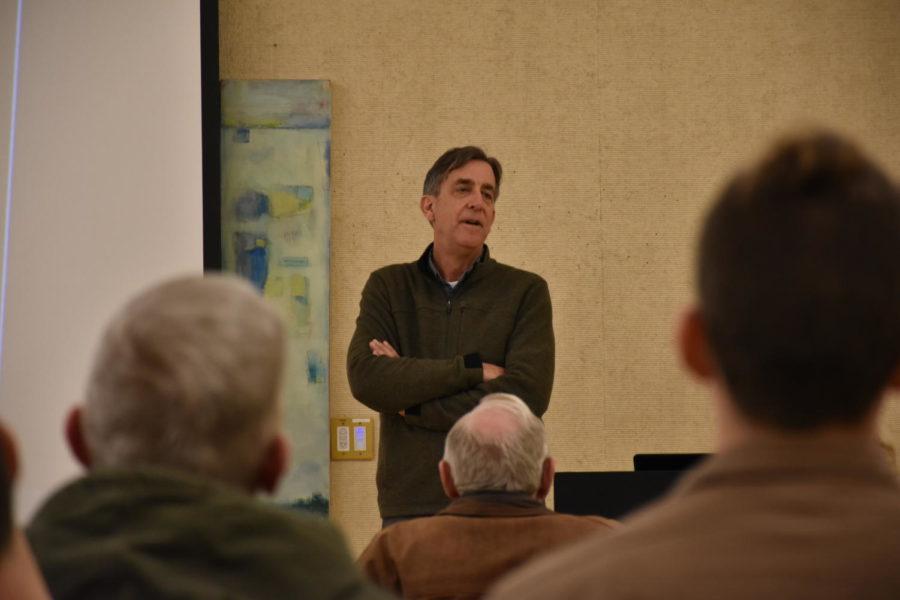White bread, wheat breeding, and the beauty of place
Steve Jones, from Washington State University, speaks at his lecture on March 26, 2018 about wheat varieties and what he and his team are doing to improve its production.
March 26, 2018
Before 2013, the last time wheat was grown at the White House was during the Civil War. That was until Michelle Obama, with the help of school children, planted it again in the White House garden in 2013 and 2014.
The wheat seeds that they planted there were sent from The Bread Lab at Washington State University.
Growing wheat in the middle of Washington D.C may seem out of place, but that is exactly the goal of Dr. Stephen Jones, director of The Bread Lab at Washington State University.
The aspect of place in regards to wheat breeding was a main point that Dr.Jones discussed in his lecture, “White Bread, Wheat Breeding and The Beauty of Place” Monday. This lecture was the annual Shivver Memorial Lecture.
Having wheat among common garden crops, such as tomatoes, allows a conversation to start, Jones said. It goes to show that you can grow wheat even where it may seem impossible
“You can grow delicious wheat anywhere,” Jones said.
In addition to being the director at The Bread Lab, Jones is also professor in the department of crop and soil sciences at Washington State University.
His own research is focused on non-commodity wheat breading. He looks at small to middle sized farms and how they can improve the varieties of both organic and traditional wheat.
One of the missions of the Bread Lab, located north of Seattle, Washington, is to show how simple it is to bake more nutritious bread that still tastes amazing.
Because they aren’t part of a commodity, Jones said they are able to experiment in ways they wouldn’t be able to do otherwise.
They work mainly with bakers and chefs, rather than food scientists, to come up with what the best use for different kinds of wheat are.
“When we encounter people that say no as a first option, we just move onto the next person,” Jones said.
They also fight the stigma that whole wheat bread needs to be physically dense and bland.
Whole wheat bread is more nutrient dense, rather than structurally dense, Jones said.
There are really only four things needed for that delicious bread, Jones said. The most important is 100 percent whole wheat. All that’s left is salt, water, and naturally occurring microbes.
In all, with those four ingredients, that whole wheat bread takes less than a dollar to produce.
Jones and the Bread Lab not only take pride in their scientific accomplishments, but they also take pride in their holistic view of being public scientists and public servants.
For the three doctorate students who have been involved with the lab, Jones makes a chapter of their dissertation be directed towards a greater audience.
These chapters face larger issues such as what ownership really is in agriculture and gender issues in the plant breeding business.
Jones does this because it helps teach the students the importance of contributing to the world in other ways than just purely scientifically.
“I sat at a microscope for five years,” Jones said. “I gained a lot from that, but looking back I wish I looked up from the scope every once in a while.”
This spring, the Bread Lab is even publishing a children’s book through Readers to Eaters, a company that helps promote food education in young kids and adults.
To spread their message further, all the Bread Lab needs is a small oven.
They take that small oven to places like local libraries and community centers. There they bake the whole wheat bread right in front of the public.
The goal is to show how for an inexpensive amount, the world can be eating bread that is not only more delicious, but more nutritious as well.
















